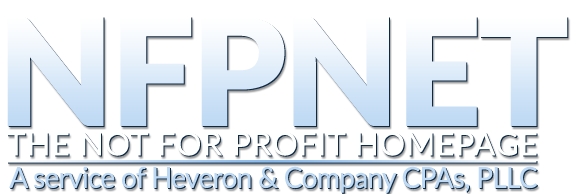OMB Proposed Uniform Guidance
Hello everyone, welcome back!
Today we’ll be discussing the Proposed OMB Uniform Guidance: Cost Principles, Audit, and Administrative Requirements for Federal Awards, more specifically changes to OMB Circular A-133, Audits of States, Local Governments, and Non-Profit Organizations. Wow, that’s quite a mouthful; see if you can say it 5 times fast!
The most important and impactful proposed change is to the limit for requiring a single audit, currently, if you expend $500,000 or more of federal funds than you are required to undergo an A-133 audit, however, there is good news for some of you. That threshold is proposed to be increased to $750,000! What this means for some of you is that the current scope of your audit will be lessoned. This change is only for the A-133 portion of your audit and does not affect other requirements imposed by other municipalities or organizations. Therefore, if you fall under $750,000 in federal expenditures you may not need to read further, however, you may want to in case this part of the proposed changes is not fulfilled.
Another proposed change in the above referenced guidance would be to increase the threshold between Type A/B programs from $300,000 to $500,000. As those of you whom have Type A know, these programs must be audited every three years as they are considered normal risk the third year after their last audit regardless of prior findings. This means that for some of you your Type A programs may be decreased or even eliminated, which may decrease the scope of you’re A-133 audits!
In addition they are considering other changes to a Type A program being labeled normal risk. Some of these are: questionable costs above 5% of the total expenses for the program, a material weakness found in the internal controls, or a failure to achieve an unqualified auditor’s opinion in its last audit.
Furthermore, they are proposing changes to the Percentage of Coverage decreasing the 50% for normal organizations to 40% and the 25% for low-risk to 20%. This means we, as auditors, may not have to test as many programs.
The proposal also includes changes to who may be deemed low-risk versus normal. The criteria for low-risk would now include the auditor’s findings regarding going concern of the organization and the timely submission of data collection forms. This proposal may help some of you to drop from normal to low-risk, again reducing the scope of your A-133 audit.
Finally, remember that all of the above are simply proposals and will not affect anyone until they are made official! Check back with us in the future for further information.
Until next time!
“All labor that uplifts humanity has dignity and importance and should be undertaken with painstaking excellence,” Rev. Dr. Martin Luther King, Jr.
